In pictures: Swansea University's Research as Art competition
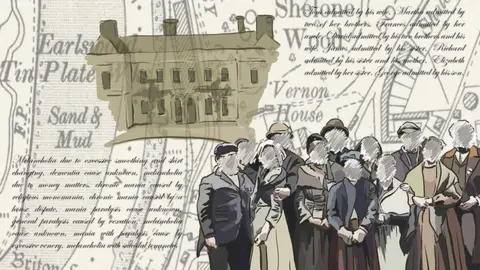 Katherine Murray
Katherine MurrayThis year's winner of the Research as Art competition tells the story of eight people committed to a private psychiatric hospital in the 1800s.
Swansea University selected 16 images to win the annual competition.
They include topics such as faecal sludge and what it would be like to be a vampire today.
The overall winner, "Living with Vernon", captures research about the people committed to Vernon House in Briton Ferry, Port Talbot.
The work is a drawn image representing 18th Century people, superimposed onto a map of the area, with an accompanying story.
Creator Katherine Murray, of the College of Arts and Humanities, said she hopes to "not only bring them to life but also inform about early care for the mentally ill".
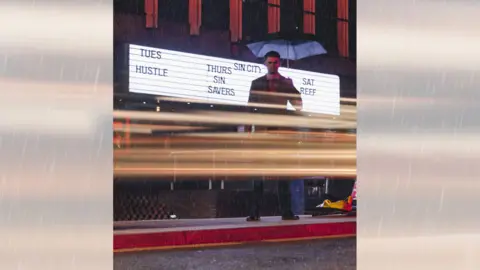 Harry McKenna
Harry McKenna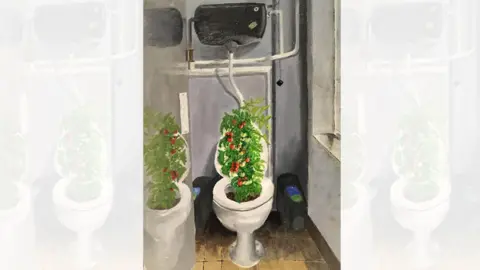 Larissa Nicholas
Larissa NicholasResearch as Art is open to researchers from all subjects, with 82 submissions made this year, with an emphasis on revealing hidden research stories, as well as composing a striking image.
Most entries were from Swansea University researchers, but this year saw more works from other institutions, including those in France, America, Bulgaria, Finland, South Africa and Singapore.
Ms Murray said that during the 1800s, every county had to have a psychiatric hospital, but Glamorgan was too poor to build one - so rented space from a private asylum.
"My research is centred around eight private patients that were committed by their families between 1850 and 1880," she explained.
"They were ordinary middle-class people who suffered different mental illnesses."
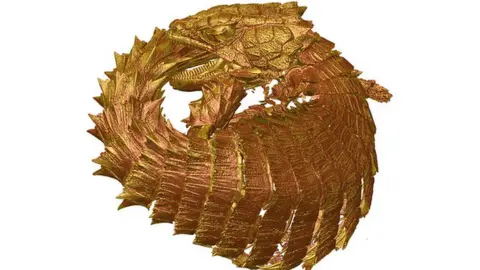 Anton du Plessis
Anton du Plessis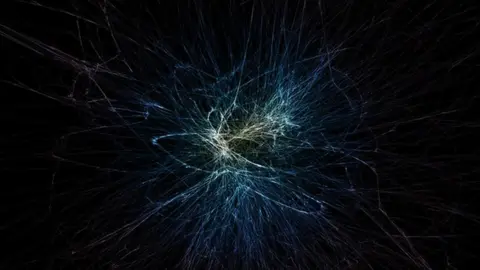 Samuel Nicholls
Samuel Nicholls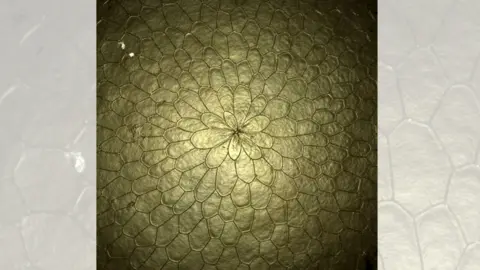 Sarah Aldridge
Sarah AldridgeOne image depicts an intricate golden egg, belonging to a Wood Tiger Moth.
Sarah Aldridge, who collaborated with Graziella Iossa on the project, said: "Though it may look like it could well belong to a dragon, this image's diameter spans less than 1mm across.
"The symmetrical pattern is thought to act as a funnel, channelling sperm towards the pores that lie at the centre of the rosette, influencing the success rate for fertilisation during mating."
Larissa Nicholas's work focuses on recycling faecal sludge.
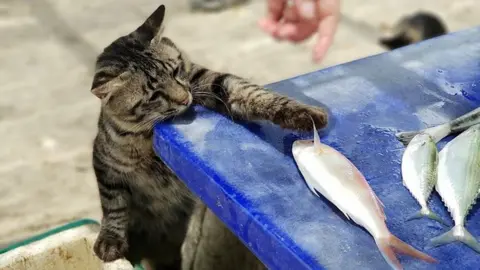 Sara Barrento
Sara Barrento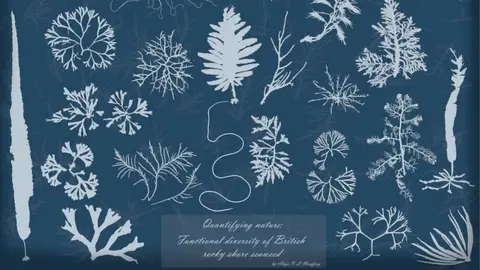 Alizée R. L. Mauffrey
Alizée R. L. MauffreyShe explained that it can be heated to 750C without oxygen to produce biochar, which can be added to soil to improve water retaining properties and to provide nutrients to crops.
Harry McKenna's piece considers what it would be like to be a vampire in the modern world, after studying The Vampyre which features immortal Lord Ruthven.
He said: "In order to answer these questions, I turned to photography. Immortality is reflected by compositing two images.
"The first, a long exposer photograph of 'car headlight' light trials; representing the passing of time. The second, a higher shutter speed photo of Ruthven himself."
Competition founder and director Professor Richard Johnston said that the competition can be a way for researchers to present their research process and what it means to be a researcher.
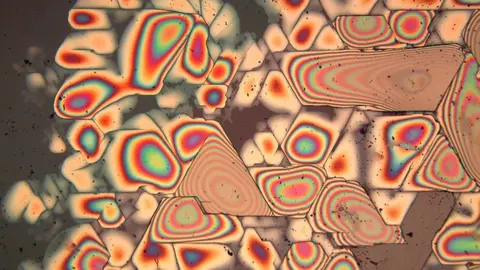 Peter Griffin
Peter Griffin